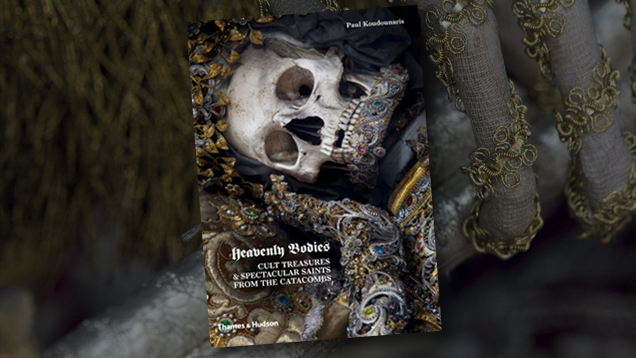Books: Heavenly Bodies:
Cult Treasures and Spectacular Saints from the Catacombs

The book examines the skeletons discovered by chance in Roman catacombs (underground tombs) in the mid-16th century. The Vatican declared the tens of thousands of skeletons found in these vast underground labyrinths to be remains of early Christian martyrs. The location alone was sufficient proof of martyrdom, and no further evidence was sought to declare their authenticity. The Catholic Church was delighted to have a substitute for the holy relics that were largely destroyed during the Protestant Reformation in German-speaking European countries. The skeletons were examined and authenticated in Rome, then dispatched to other Catholic parishes, mainly in Germany and Switzerland.
Upon their arrival, the skeletons were lavishly adorned. Fragile bones would be reinforced by animal glue; missing parts would be replaced by wood or sometimes metal. They would be preserved with wax and meticulously covered with gauze, silk, and gemstones and pearls set in silver. The decorative work took hundreds of hours and was performed by nuns and silversmiths on each skeleton that went on display. Some churches had to wait until they could collect the funds for this costly task. It is interesting that when the church couldn’t afford natural gems, it compromised and used imitation stones, and even these weren’t inexpensive at the time. Many devotees supported the cause by donating jewelry and money. After all, these luxuriously decorated skeletons were a great attraction and a source of income for the church.
By the 19th century, pride in the catacomb saints had faded. The revered relics became an embarrassment due their questionable origin. The Catholic Church itself began to doubt the authenticity and the necessity of these objects. Once considered remains of the saints, the ornately embellished skeletons began quietly disappearing from the public scene. Today, a few churches in Switzerland and Germany still maintain them, but not on public display. Paul Koudounaris was granted access to the few remaining specimens for research, and the book is magnificently illustrated with more than 100 of his photos.
Heavenly Bodies is an illuminating read for jewelry historians and gemologists alike, as it reveals an unusual aspect of jewelry and use of gems.



